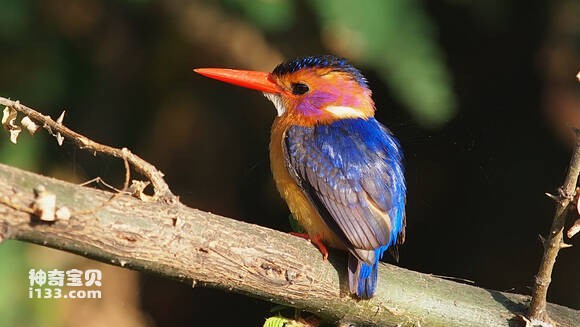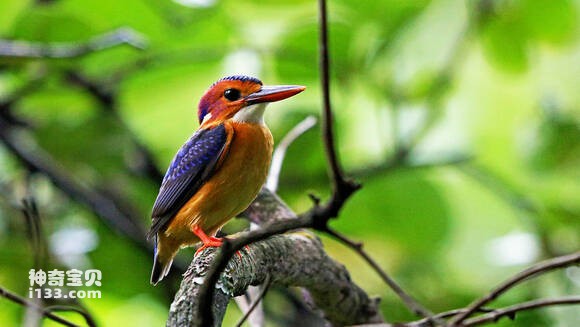Ispidina picta
IUCN
LCBasic Information
Scientific classification
- name:Ispidina picta
- Scientific Name:Ispidina picta,African Pygmy-kingfisher
- Outline:Climbing birds
- Family:
Vital signs
- length:About 12 cm
- Weight:9-16g
- lifetime:No textual research information is available
Feature
Distribution and Habitat
The pink kingfisher is found in central and southern Africa (including the southern Arabian Peninsula and the entire African continent south of the Sahara Desert (Tropic of Cancer).)
Pink kingfishers tend to live in woodlands and dry grassy surfaces. As a result, they are found in dry grasslands and shrubs and savannas. However, it is also found near rivers, in dense grasslands, swampy forests, dense evergreen forests, plantations, farms, gardens, and meadows. It is found at altitudes of up to 1500 m in South Africa and up to 2000 m in eastern Africa.
Appearance
The pink kingfisher is 12cm long and weighs 11-16 g for males and 9-15 g for females. Male and female are similar. In adult birds, the crest feathers have a bluish-black sheen. Red eyebrows, black eyes first, lilac cheeks. There is a large white or light yellow spot on each side of the neck, the neck is red and open, and the back and tail are blue-purple. Tail and wings black. Chin and throat white. The wings have a yellow-red hue. Red mouth, dark brown iris. Legs orange-red. The young have dark plumage and a pale blue back. Black mouth with some yellow, pink legs.
Details
Ispidina picta (African Pygomy-Kingfisher) has three subspecies (1.Ispidina picta pictus is found in Senegal, Eritrea and Uganda). 2.Ispidina picta ferrugineus is found in Uganda, Angola, Zambia, Tanzania, Guinea-Bissau and Botswana. 3.Ispidina picta natalensis occurs in Angola, Tanzania, Zanzibar, South Africa, Zaire, Uganda and Sudan.)

The pink kingfisher is a solitary, peaceful bird. They spend a considerable amount of time standing on a branch near the water, occasionally shaking their heads and briefly waving their tails. It spends most of its time hunting prey and also catching insects on the fly. These birds migrate at different times depending on the subspecies' distribution area.

The pink kingfisher, like most kingfishers, is entirely carnivorous. Often searching for prey in leaves or dirt. The main food is insects, such as crickets, spiders, scorpions, and snails. They also eat a variety of aquatic animals. Although they are often near the water and bathe in the water, they do not fish, but sometimes catch small frogs.
Breeding seasons vary depending on latitude: from September to November in Mauritania and Mali, from March to October in South Africa in West Africa, from March to June and October to November in East Africa, from January to March and August to October in Zaire and Angola, and from October to December to March in the rest of Southern Africa.
Pink kingfishers generally nest on earth cliffs or river embankments, and the male and female use their mouths to dig tunnel burrows for nests, 30 to 60 centimeters long. These caves are generally bare of bedding. The female lays four to six eggs, which are laid directly on the nest ground.
Listed in the International Union for Conservation of Nature (IUCN) ver 3.1:2008 Red List of Birds.
Protect wild animals and eliminate wild meat.
Maintaining ecological balance is everyone's responsibility!








